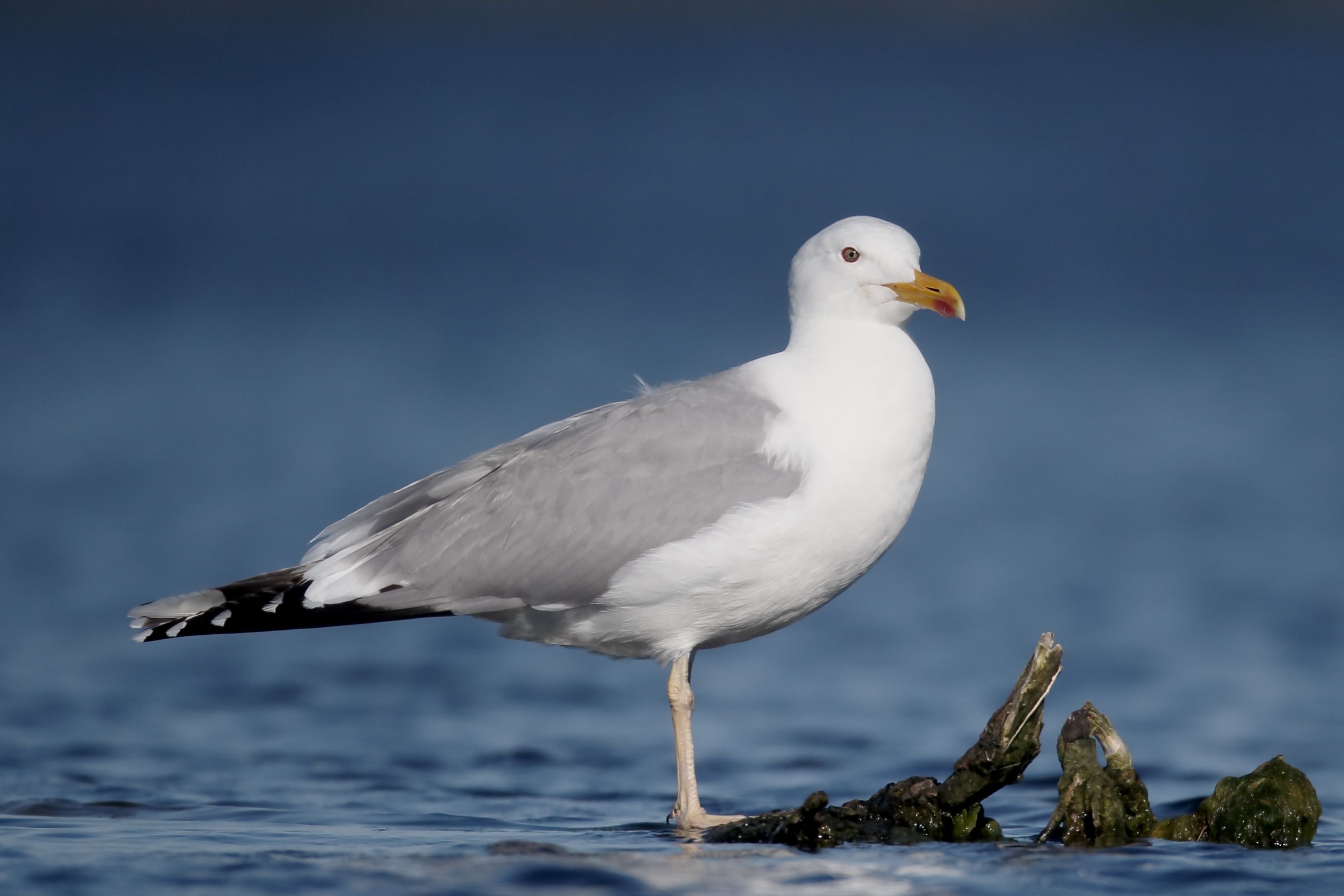Caspian gull
(Larus cachinnans)

Description
The Caspian gull (Larus cachinnans) is a large gull and a member of the herring and lesser black-backed gull complex. The scientific name is from Latin. Larus appears to have referred to a gull or other large seabird, and cachinnans means 'laughing', from cachinnare 'to laugh'. It is a large gull at 56–68 cm (22–27 in) long, with a 137 to 155 cm (54 to 61 in) wingspan and a body mass of 680–1,590 g (1.50–3.51 lb). Among standard measurements, the wing chord is 38.5 to 48 cm (15.2 to 18.9 in), the bill is 4.6 to 6.4 cm (1.8 to 2.5 in) and the tarsus is 5.8 to 7.7 cm (2.3 to 3.0 in). The Caspian gull has a long, slender bill, accentuated by the sloping forehead. The legs, wings, and neck are longer than those of the herring gull and yellow-legged gull. The eye is small and often dark, and the legs vary from pale pink to a pale yellowish colour. The back and wings are a slightly darker shade of grey than the herring gull, but slightly paler than the yellow-legged gull. The outermost primary feather has a large white tip and a white tongue running up the inner web. First-winter birds have a pale head with dark streaking on the back of the neck. The underparts are pale and the back is greyish. The greater and median wing coverts have whitish tips forming two pale lines across the wing. The Caspian gull breeds around the Black and Caspian Seas, extending eastwards across Central Asia to north-west China. In Europe, it has been spreading north and west and now breeds in Poland and eastern Germany. Some birds migrate south as far as the Red Sea and Persian Gulf, while others disperse into Western Europe, in countries such as Sweden, Norway and Denmark or the Benelux and even North of France. Small numbers are now seen regularly in Britain, especially in South-east England, East Anglia, and the Midlands. It typically nests on flat, low-lying ground by water, unlike the yellow-legged gull, which mainly nests on cliffs in areas where the two overlap. The breeding season starts from early April. Two or three eggs are laid and incubated for 27 to 31 days. They are scavengers and predators with a very varied diet. During the breeding season, they often eat rodents such as ground squirrels, flying some distance into the steppes to find them.
Taxonomic tree:







